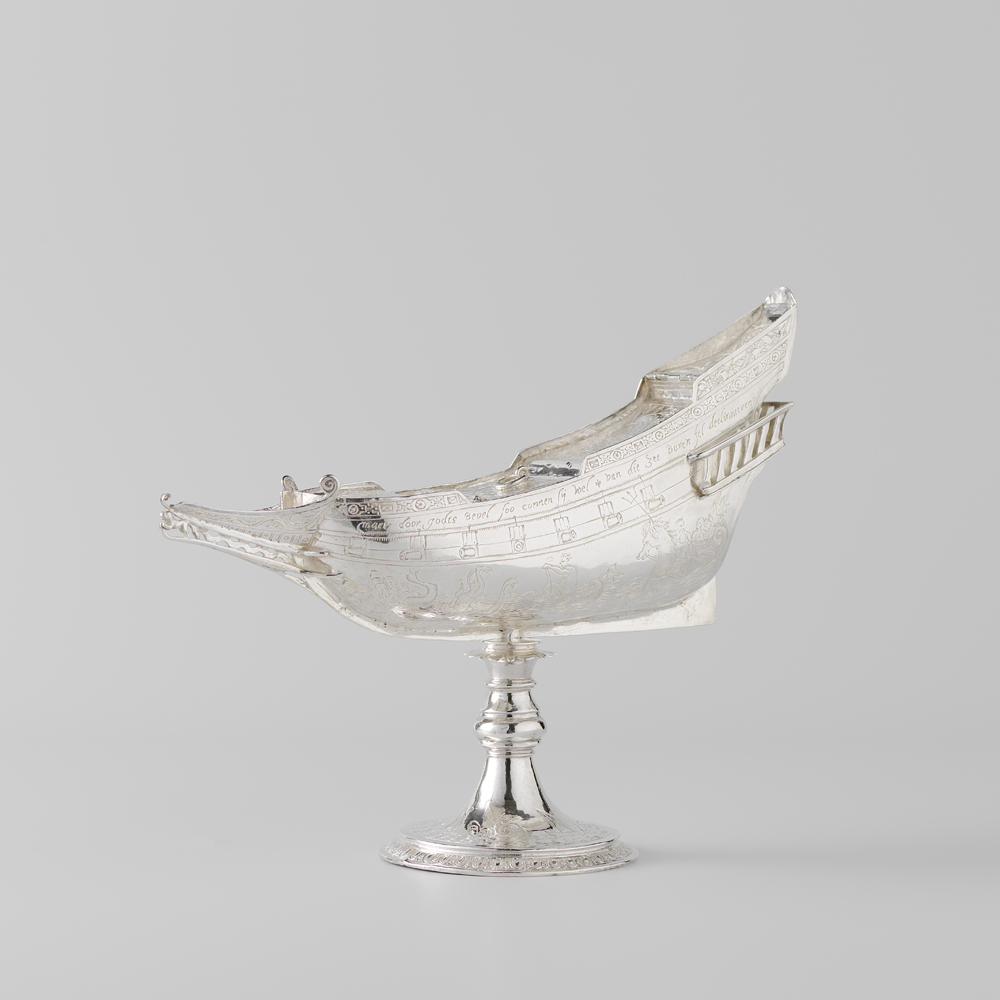Stop 3 - Spice box
This little spice boat is of the Mauritius, one of the first Dutch ships to venture to the East Indies in 1596. The expedition was organised by a syndicate in Amsterdam called the Compagnie van Verre (Companiye van Verra) (long-distance company). Its purpose was to break the Portuguese monopoly on the pepper trade.
The Mauritius was one of four vessels sent to Bantam in Indonesia under the direction of Cornelis De Houtman (Cornaylis de Howtman), who, in 1592, had visited Portugal to obtain secret maps that would enable him to sail to the spice islands. This information had been given to Petrus Plancius who drafted a spice map. Another cartographer, Jan Huyghen van Linschoten (Jan Howgyn van Linskoten,) had also recently returned from Goa in India and published an account of his journeys. This included a large amount of information on the East Indies that confirmed all of Plancius' charts. Both these charts are on the wall next to this spice boat.
The fleet sailed from the port of Texel on 2nd of April, 1595. The voyage was marred with problems throughout, including an extended stay in Madagascar, where many men died from illness. They reached Bantam in June 1596. After a month-long negotiation, the sultan entered into a treaty, whereby the Dutch received favoured trading status over the Portuguese, in exchange for protection of the sultan in time of war. The Portuguese, however, had had no European rival for trade in Java for the last seventy-five years, and they looked for ways to sabotage the treaty. Relations quickly soured and violent skirmishes against the Batamese and later other sultanates in Java saw the Dutch leave without the full cargo they intended.
Although a diplomatic disaster, the voyage was nevertheless hailed as a symbolic success, as it opened the way for the subsequent successful voyages that led to the founding of the VOC (the Dutch East India Company), in 1602, and the establishment of a vast Dutch commercial empire in South and Southeast Asia.

- Next Stop
-

Stop 4 - Pepper Pot
next